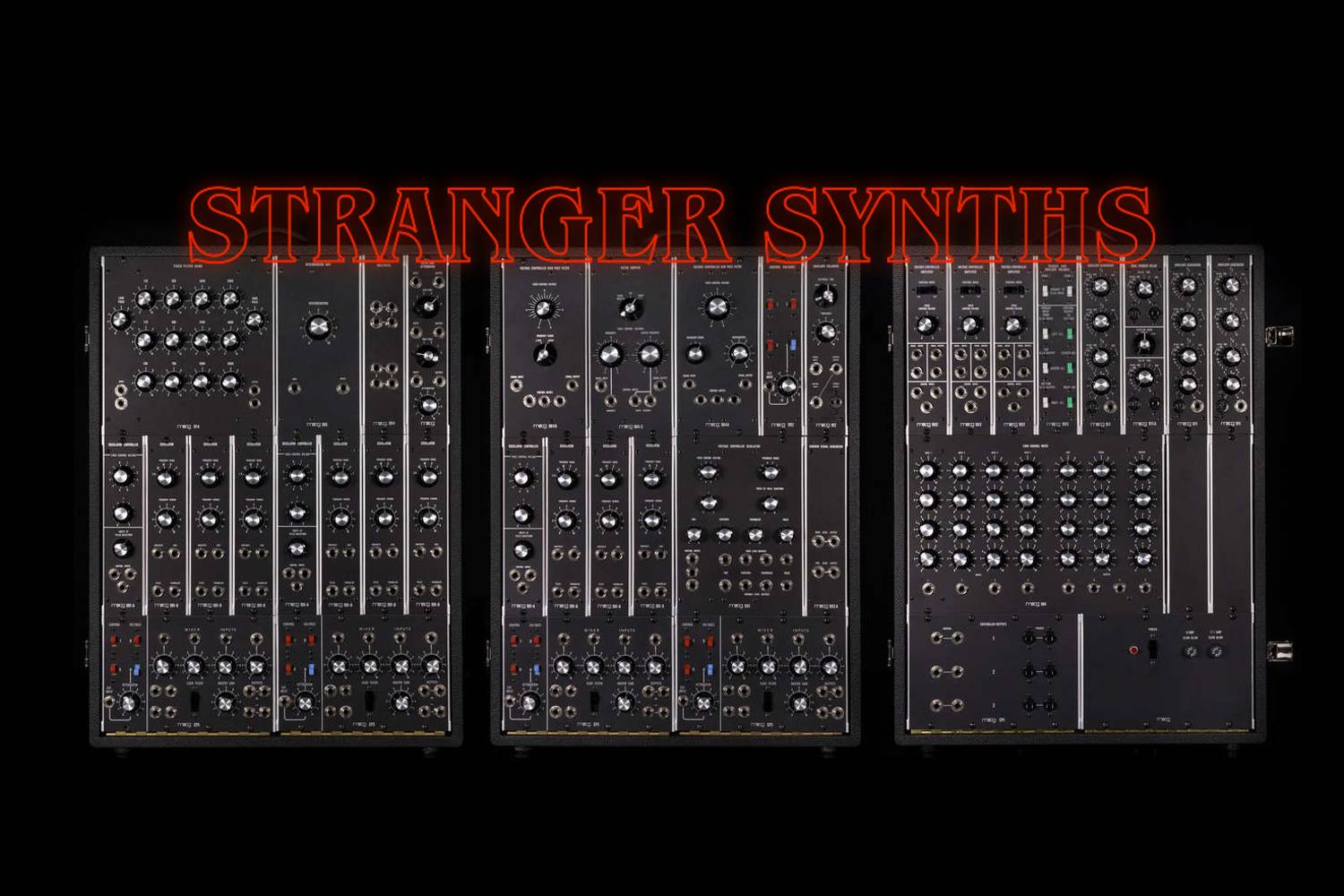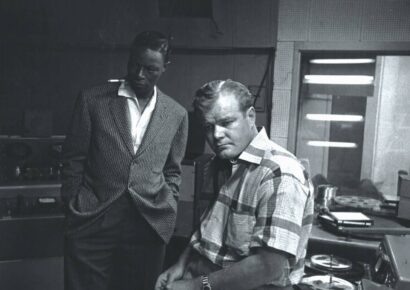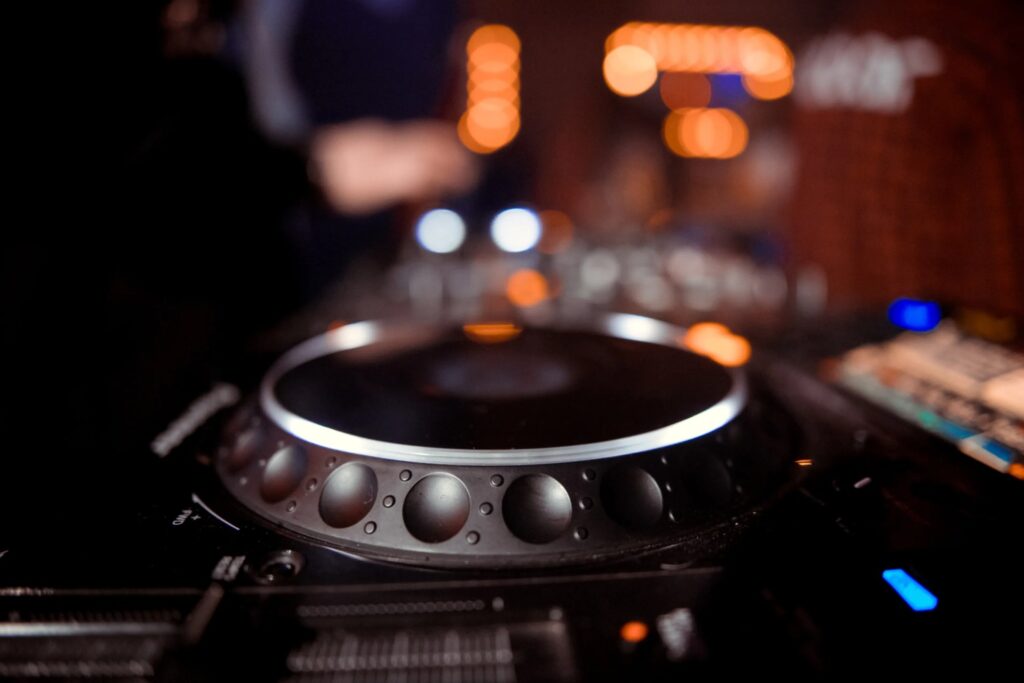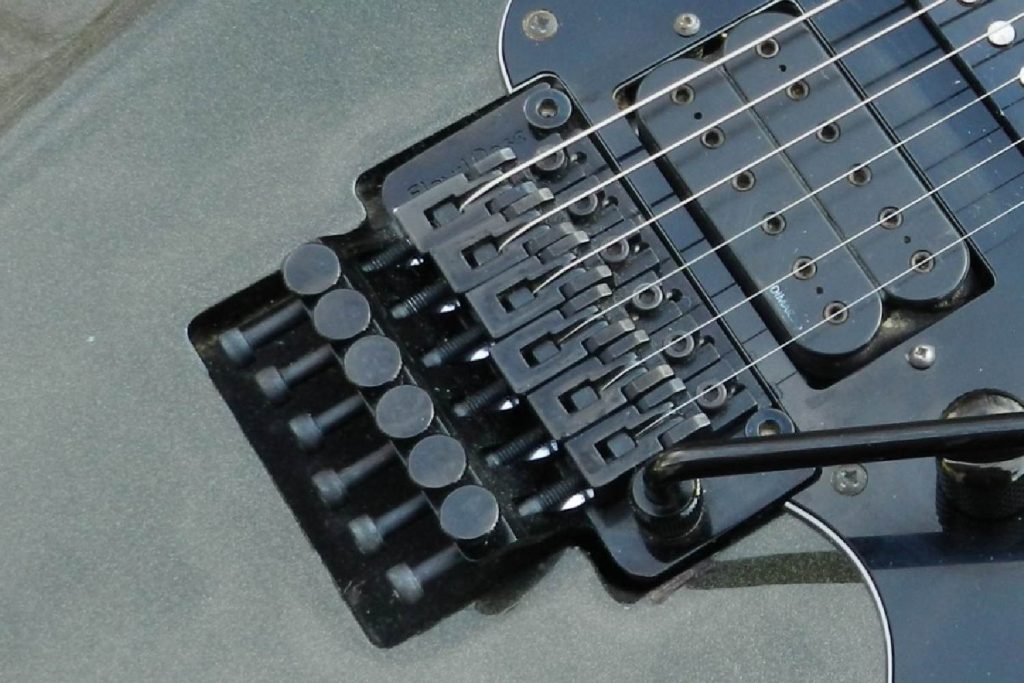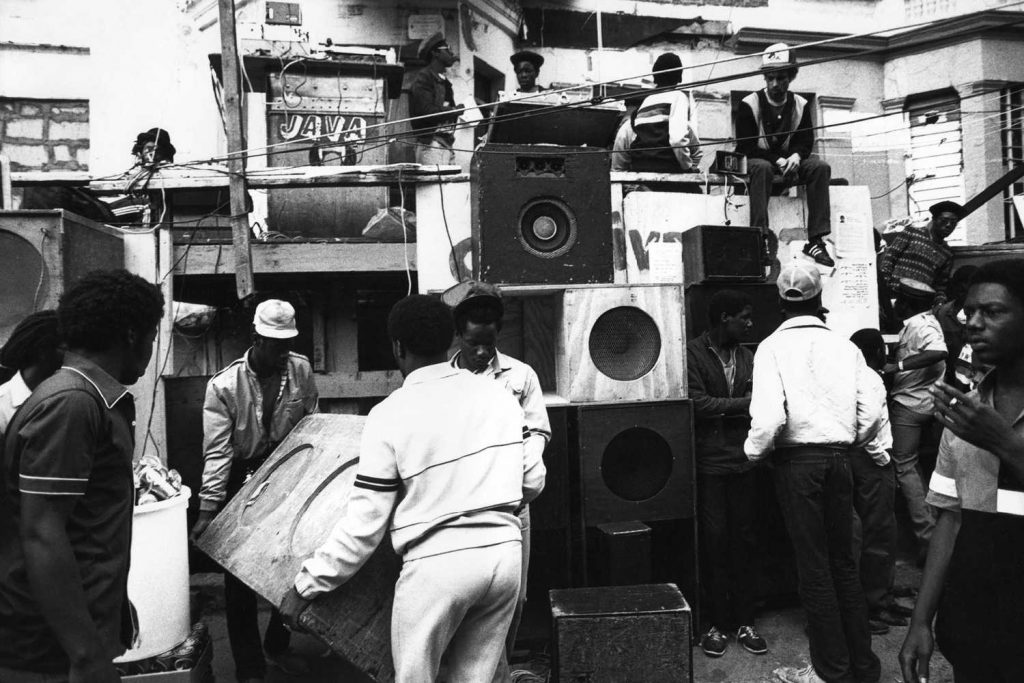We're scoping out exactly which synthesizers were used to create some of your favourite themes and soundtracks.
There’s few instruments as well-suited to scoring the big (and small) screen as the humble synthesizer – from the ethereal and lush to the deep and foreboding. With our insatiable cultural appetite for ’80s nostalgia over the past several years showing no signs of slowing down, synthesizer soundtracks and themes with a distinctly retro flavour continue to crop up in plenty of new shows and films.
Read up on all the latest features and columns here.
Today, we’re diving into some of the most iconic synthesizer heavy scores to find out exactly which buzz boxes were used to create them. To modulation, and beyond!
Synthesizer Soundtracks
Stranger Things (2015 – )
The Stranger Things theme song is a sonic summation of all things ‘80s. Composed by Michael Stein and Kyle Dixon of the electronic band Survive, The Duffer Brothers reportedly first approached the pair after hearing and loving their music used in the film The Guest.
In order to create those evocative, pulsating sounds, the pair used the vintage classic Prophet-5 synth, made in the late ‘70s through to the early ‘80s, the Roland SH-2 for the arpeggiated bass line, as well as the ARP 2600, with which the duo created what they described as the ‘tuba’ sounding hits on the theme.
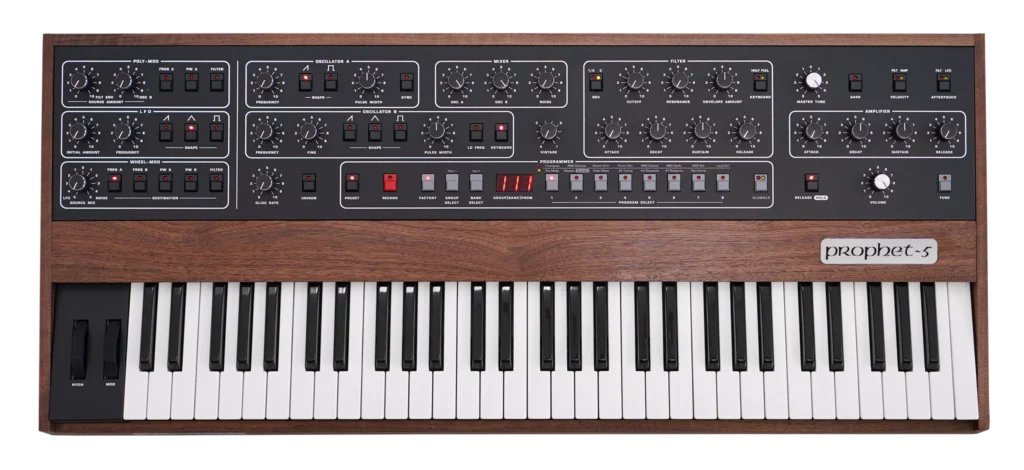
Blade Runner (1982)
Crafted by legendary Greek composer Vangelis, the soundtrack and title theme to Ridley Scott’s 1982 sci-fi classic Blade Runner marked a huge breakthrough in synthesizer driven music and was revolutionary for its time.
One of the instruments that Vangelis is known to have made extensive use of throughout his career was the Yamaha CS-80. Legend has it that Vangelis had seven of these gargantuan units, which are notorious for breaking down in this day and age, and even more notorious for being so damn expensive, holed up in his studio. The unit’s analog synthesis capabilities produce rich and warm tones, with a wide range of sonic possibilities. The CS-80’s polyphonic capabilities and expressive control features allow for dynamic and emotive playing, making it a highly sought-after and iconic synth.
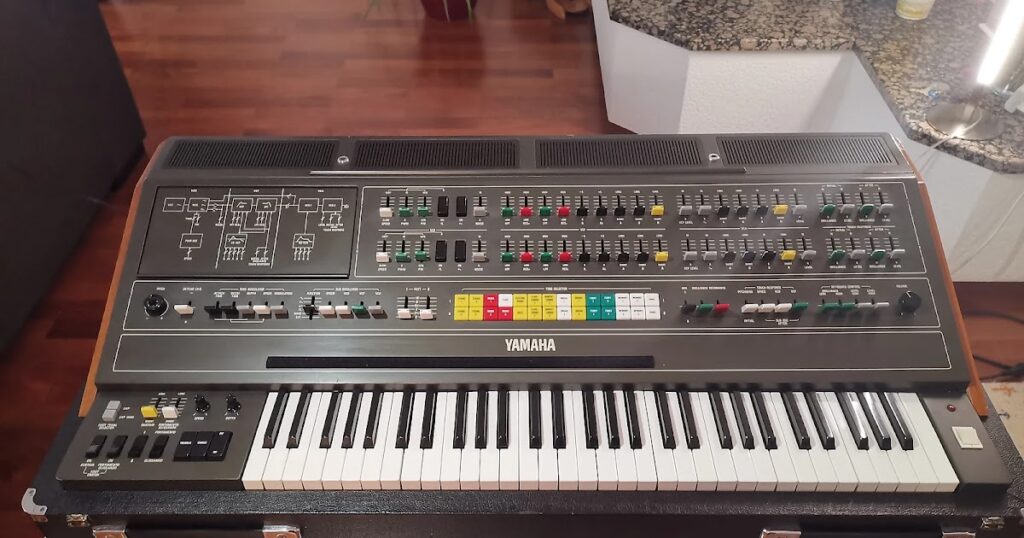
It Follows (2015)
David Robert Mitchell’s debut horror feature following a teenage girl who acquires a curse passed on through intercourse has quickly become an underground cult-classic – and in no small part thanks to its remarkable score created by Richard Vreeland, better known by his stage name Disasterpeace. With a background in music composition for video games, the score is highly nostalgic – extremely reminiscent of 80s horror and sci-fi with razor sharp leads and ethereal pad sounds.
According to his website, Disasterpeace designed most of the score with a software synth – Native Instruments Massive:
“I designed most of the sounds in the score with Native Instruments Massive. Massive is a versatile synthesizer that I have used a lot over the years. I learned how to build my own synth patches in college and had refined that ability while working on FEZ. Massive was a natural choice for me to create a synth score on a short timeline.”
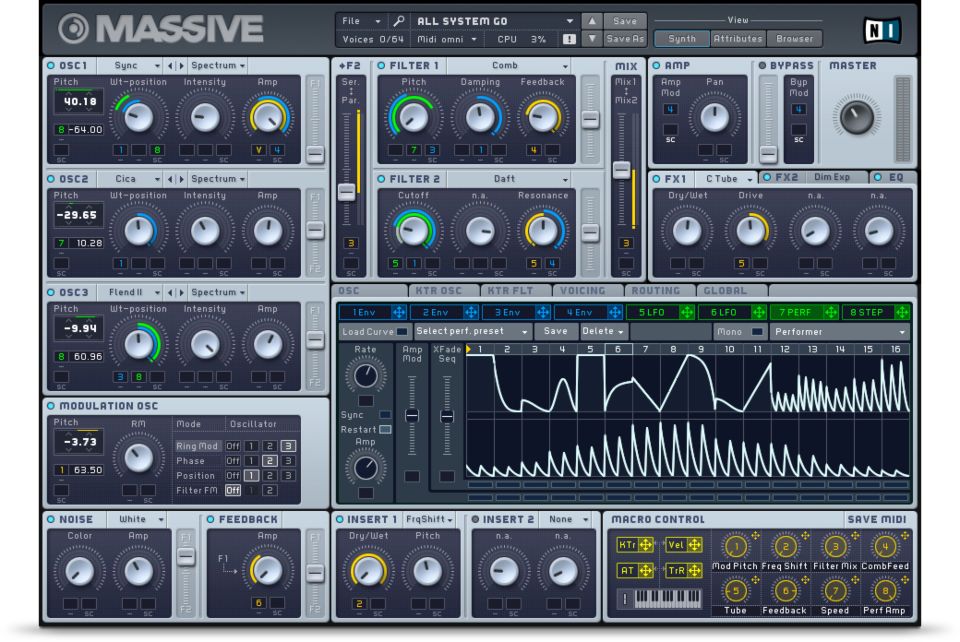
Scarface (1983)
There’s few names as synonymous with synth on the big screen as Giorgio Moroder. Known widely as the progenitor of euro disco, Moroder’s rollicking, groovy theme for the Al Pacino starring gangster classic Scarface is one of the most iconic uses of synth in soundtracking history.
Moroder reportedly predominantly used the Roland Jupiter-8, as well as the aforementioned Yamaha CS-80 to accentuate his score. The Jupiter 8 is a legendary analog unit, known for its lush and powerful sound, with eight-voice polyphony, extensive modulation capabilities, and versatile filters. Synth newbies: don’t get too attached to this one – like the CS-80, it’s incredibly rare and even more expensive.

Uncut Gems (2019)
A film widely acknowledged to have provided audiences with both the best Adam Sandler performance to date and blood curdling levels of second hand anxiety, the score that Daniel Lopatin, better known by his stage name Oneohtrixpointnever, composed for Uncut Gems pulsates dazzlingly beneath Howie Bling’s jewel-slinging escapades.
According to synth stalwarts Moog, directors Josh and Benny Safdie began collaborating themselves and Lopatin at the beginning of the score composition process for Uncut Gems, seeking a sound that was at once rich, majestic and new:
“We began collaborating with Lopatin at the beginning of his film scoring process, which coincided with his initial exploration of the Moog One synthesizer. Working closely through studio visits and sound design discussions, we developed a synergy with Lopatin, which helped birth the specific sounds he and the Safdies envisioned for the ‘Uncut Gems’ soundtrack—sounds that nod to the synth-heavy scores of electronic music icons.”
The flagship polyphonic synthesizer from Moog, the Moog one delivers a massive and immersive sound experience. With its three VCOs per voice, extensive modulation options, and expressive control features, this beauty offers astounding sonic depth and versatility, embodying the essence of Moog’s legacy, while pushing the boundaries of modern synthesis.
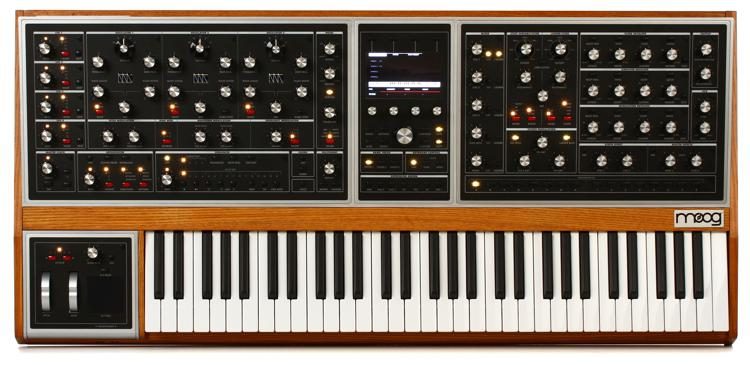
Suspiria (1977)
The first time Italian prog rock band Goblin collaborated with legendary giallo horror auteur Dario Argento, it was on the hugely successful score for his 1975 film Deep Red. When crafting that soundtrack, the band had a scant ten days to complete the job. When they teamed up with Argento for the second time to score his cult-classic Suspiria, however, they were privileged with more time and the freedom to really experiment. Largely unknown territory at the time, the band began to explore more synthesis, hiring a legendary “big Moog”, a System 55 Moog modular synthesizer, for the project. This huge analogue synth wasn’t the most user-friendly instrument on the planet, and so the band brought in another composer, Felice Fugazza, to run it for them.
Claudio Simonetti of Goblin said of Fugazza:
“He was very focused with the Moog, he knew how to use it. So everything we passed to him, he realised.”
In addition to the System 55, Simonetti also incorporated the Hammond B-3, the Hohner Clavinet and the Minimoog when creating the chaotic creep of the Suspiria soundtrack.
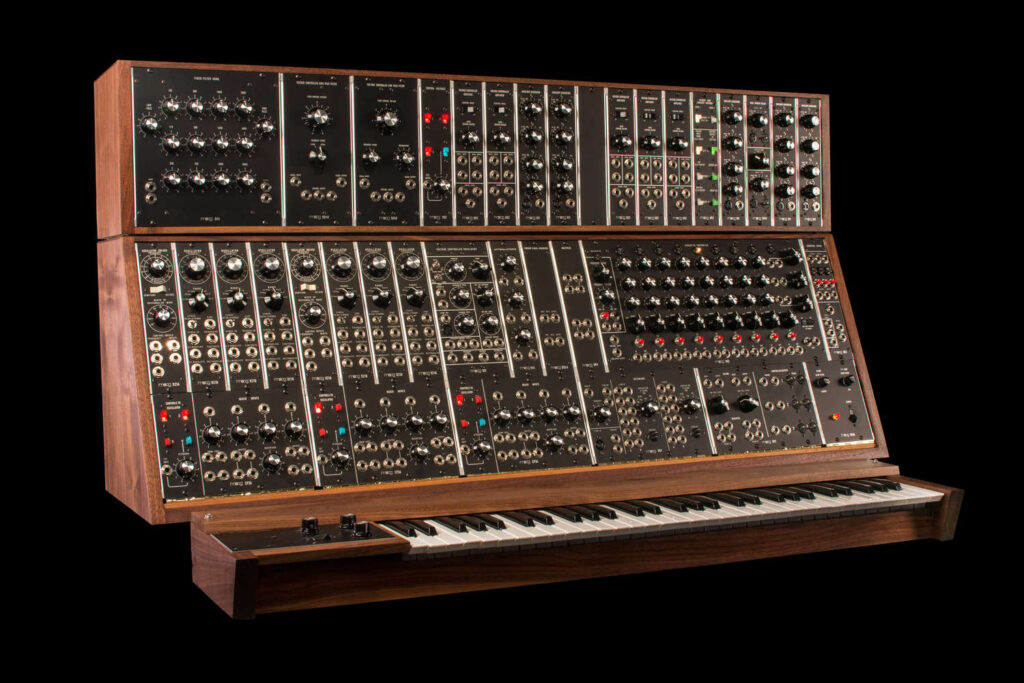
Read more about the use of synthesizer and piano on the Stranger Things soundtrack here.
